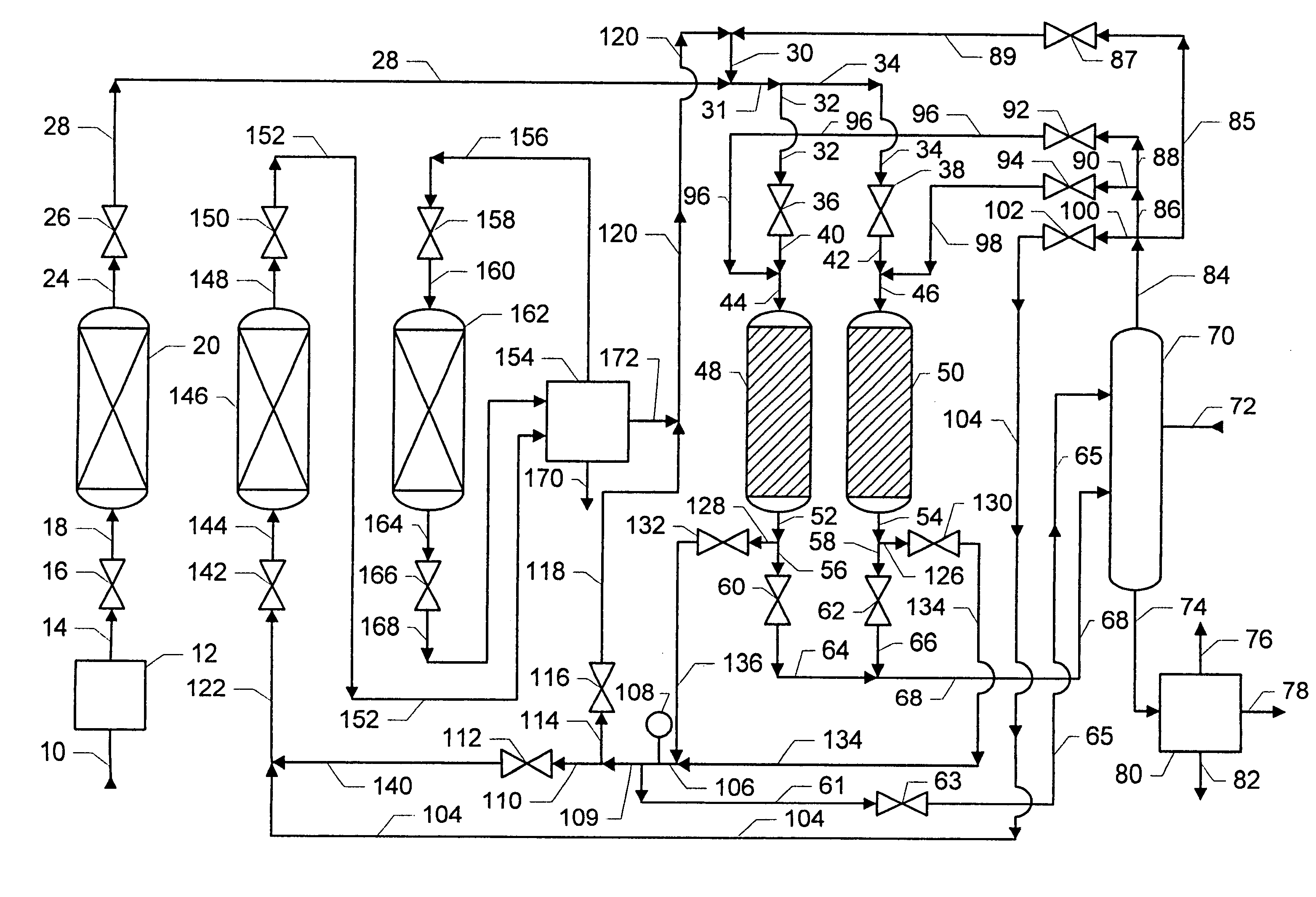Alkylaromatic process with catalyst regeneration
a technology of alkylation and catalyst, which is applied in the direction of lubricant composition, chemistry apparatus and processes, organic chemistry, etc., can solve the problems of reducing the efficiency of prior art use of benzene, reducing the efficiency of alkylation reactor, so as to save capital investment and operating expenses.
- Summary
- Abstract
- Description
- Claims
- Application Information
AI Technical Summary
Benefits of technology
Problems solved by technology
Method used
Image
Examples
Embodiment Construction
[0023]Processes for the production of alkylated aromatic compounds, with and without the removal of aromatic byproducts, are well known and need not be described in detail herein. These processes are described in U.S. Pat. Nos. 6,069,285; 6,111,158 B1; and 6,187,981 B1. Briefly, an olefin feed stream reacts with an aromatic feed stream. The olefin feed stream contains C6–C22 monoolefins but may also contain C6–C22 paraffin and C6–C22 aromatic byproducts. The monoolefins may be linear or branched. When present, the branched monoolefins may have one or two methyl or ethyl branches, but more branches and branches with more carbon numbers are possible. The aromatic feed stream contains an aromatic compound, typically benzene or alkylated derivatives of benzene. The alkylated derivatives of benzene may include toluene, xylenes, and higher methylated benzenes, ethylbenzene and higher ethylated benzenes. In the discussion that follows and for purposes of illustration, the feed aromatic com...
PUM
| Property | Measurement | Unit |
|---|---|---|
| temperature | aaaaa | aaaaa |
| temperature | aaaaa | aaaaa |
| inlet temperature | aaaaa | aaaaa |
Abstract
Description
Claims
Application Information
 Login to View More
Login to View More - R&D
- Intellectual Property
- Life Sciences
- Materials
- Tech Scout
- Unparalleled Data Quality
- Higher Quality Content
- 60% Fewer Hallucinations
Browse by: Latest US Patents, China's latest patents, Technical Efficacy Thesaurus, Application Domain, Technology Topic, Popular Technical Reports.
© 2025 PatSnap. All rights reserved.Legal|Privacy policy|Modern Slavery Act Transparency Statement|Sitemap|About US| Contact US: help@patsnap.com


